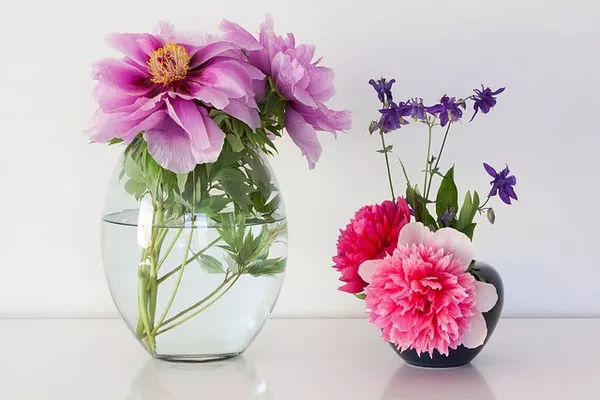Flowers, with their delicate petals and vibrant hues, have long been cherished as symbols of beauty and affection. Whether adorning a special occasion or brightening up a living space, a bouquet of fresh flowers can bring joy and elegance to any environment. However, once cut from their stems, the lifespan of these floral arrangements becomes a matter of concern. How long can they retain their beauty and freshness when placed in water? This article delves into the science behind flower longevity and provides practical tips for maximizing the lifespan of your floral displays.
Understanding Flower Physiology:
Before delving into the factors influencing the longevity of cut flowers, it’s essential to understand the physiology of flowers. Flowers are the reproductive structures of plants, serving the crucial function of producing seeds for the next generation. When a flower is cut from its stem, it is severed from its source of nutrients and water, initiating a process of senescence, or aging.
Senescence in flowers is characterized by a series of physiological changes, including wilting, browning of petals, and eventual decay. These changes are influenced by various factors, both intrinsic and extrinsic, that affect the flower’s ability to uptake water and maintain its structural integrity.
Factors Affecting Flower Longevity:
1. Species and Variety:
Different species and varieties of flowers have varying lifespans once cut. Some flowers, such as roses and carnations, are known for their longevity and can last for a week or more with proper care. Others, like delicate lilies or tulips, may have a shorter vase life.
2. Maturity at Harvest:
The stage of maturity at which a flower is harvested can significantly impact its longevity. Flowers harvested too early may not have fully developed buds and may fail to open properly. Conversely, flowers harvested too late may already be showing signs of senescence.
3. Environmental Conditions:
Temperature, humidity, and light exposure play crucial roles in determining the lifespan of cut flowers. Exposure to high temperatures can accelerate water loss through transpiration, leading to wilting and dehydration. Similarly, low humidity levels can expedite the drying out of flower petals.
4. Water Quality:
The quality of the water in which flowers are placed can greatly affect their lifespan. Clean, fresh water free from contaminants is essential for preventing the growth of bacteria and fungi, which can accelerate decay. Adding floral preservatives to the water can also help prolong the freshness of cut flowers by providing essential nutrients and inhibiting microbial growth.
5. Stem Cutting and Preparation:
Proper stem cutting and preparation are critical for ensuring optimal water uptake and longevity. Cutting flower stems at a 45-degree angle helps create a larger surface area for water absorption. Removing any foliage that would be submerged in water can prevent bacterial growth and maintain water clarity.
6. Water Temperature:
The temperature of the water in which flowers are placed can impact their ability to uptake water. Warm water is generally recommended for most flowers, as it helps facilitate the opening of flower buds and improves water uptake. However, some flowers, such as cut lilacs or irises, may benefit from cooler water temperatures.
7. Ethylene Sensitivity:
Ethylene is a natural plant hormone that can accelerate the ripening and senescence of flowers. Some flowers are more sensitive to ethylene than others and may exhibit accelerated wilting and petal abscission when exposed to this gas. Proper storage away from ethylene-producing fruits and vegetables can help mitigate its effects.
Maximizing Flower Longevity:
Now that we’ve explored the various factors influencing the longevity of cut flowers, let’s discuss some practical tips for maximizing their lifespan:
1. Choose Fresh, High-Quality Flowers:
Selecting fresh, high-quality flowers is the first step in ensuring longevity. Look for flowers with firm stems, vibrant petals, and unopened buds. Avoid blooms that show signs of wilting, discoloration, or damage.
2. Trim Stems and Remove Foliage:
Upon bringing your flowers home, trim the stems at a 45-degree angle using sharp scissors or shears. Remove any foliage that would be submerged in water to prevent bacterial growth. Repeat this process every few days to maintain optimal water uptake.
3. Use Clean, Fresh Water:
Fill a clean vase with fresh water and add floral preservatives according to the package instructions. Change the water every two to three days to prevent bacterial growth and maintain water clarity.
4. Control Environmental Conditions:
Place your floral arrangement in a cool, well-ventilated area away from direct sunlight, heaters, or drafty areas. Avoid placing flowers near ripening fruits or vegetables, as they emit ethylene gas, which can hasten flower senescence.
5. Monitor Water Levels:
Check the water level in your vase daily and top it off as needed to ensure that the stems remain submerged. Re-cutting the stems every few days can also improve water uptake and prolong flower freshness.
6. Consider Floral Food Alternatives:
In addition to commercial floral preservatives, some homemade alternatives can help extend the lifespan of cut flowers. Adding a few drops of bleach or vodka to the water can inhibit bacterial growth and keep the water clean.
Conclusion:
In conclusion, the lifespan of a bouquet of flowers in water depends on a variety of factors, including species, environmental conditions, water quality, and proper care and maintenance. By understanding the physiological processes underlying flower senescence and implementing practical tips for maximizing longevity, you can enjoy the beauty of your floral arrangements for as long as possible. So the next time you receive or purchase a bouquet of fresh flowers, remember these guidelines to ensure that they continue to brighten your home for days to come.


